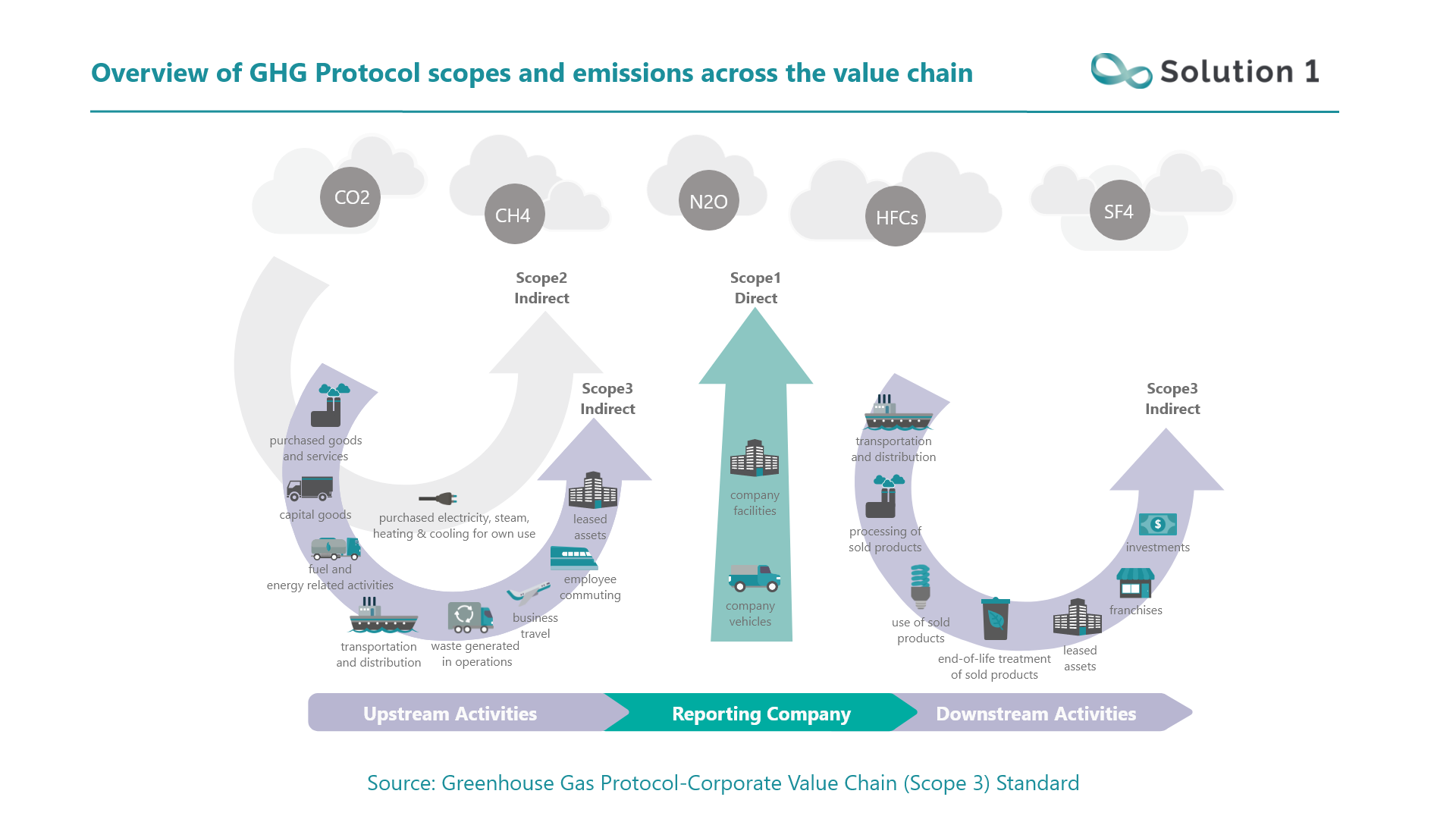Climate change is one of the most serious environmental problems that human beings are facing today.
- Cities are already one of the main sources of carbon emissions.
The sudden growth in the greenhouse gas emissions within our environment was initiated from the industrial age till around the end of the eighteenth century. Human activities are the primary contributors to all these emissions by the consumption of fossil fuels and desertification, which increases the number of greenhouse gasses in the atmosphere at an immense rate.
Carbon footprint is a tool for quantifying emissions. It is a measure of the exclusive total amount of carbon dioxide emissions that are directly and indirectly caused by an activity or are accumulated over the life stages of a product.
Emissions include direct emissions from the activities, products, and processes under the control of the organization or owned by it; emissions include indirect energy emissions; include any further indirect emissions, and are often the biggest contributor to an organization’s carbon footprint.
Nowadays, more than half of the global population lives in cities. Following a constant increase by the year 2050, even two-thirds of global citizens will be living in cities.
“According to the United Nations Development Programme, cities occupy just 3% of the Earth’s land but account for 60 to 80% of energy consumption and at least 70% of carbon emissions.”
Looking at cities through the lens of climate change, cities are a crucial factor. To tackle the challenge of climate change, carbon emissions need to be reduced drastically, especially in cities. In order to formulate carbon reduction targets, emissions must be calculated first. Different studies propose methods and tools for the carbon accounting of industries.
- Carbon emissions reduction is necessary to halt climate change.
In recent years, the influence of anthropogenic greenhouse gas emissions on global climate change has been demonstrated. Both mitigation and adaptation to climate change are technological, economic, social, and institutional challenges that will become increasingly difficult to overcome without prompt action to reduce GHG emissions.
Climate change is the defining issue of our time. The steadily increasing greenhouse gas emissions in the Earth’s atmosphere will have unprecedented global and local impacts on the environment, societies, and economies in the near and long-term future.
“According to IEA analysis, Global economic output in advanced economies recovered to pre-pandemic levels in 2021, but CO2 emissions rebounded less sharply, signalling a more permanent trajectory of structural decline. CO2 emissions in the United States in 2021 were 4% below their 2019 level. In the European Union, they were 2.4% lower. In Japan, emissions dropped by 3.7% in 2020 and rebounded by less than 1% in 2021.”
Global warming and several other environmental issues have stirred up strong international community concerns. Countries have made promises on pollution cuts and a plan of action according to the consensus has been finalized. Such as the revolutionary ideas of the low-carbon life, low-carbon economy, carbon tax, low-carbon environment, carbon trading, etc. have become the world’s primary development strategies.
In France, these objectives of reduction have been adapted since 2015 via the National Low-Carbon Strategy which sets the objectives for reducing GHG emissions by 2050. Between 1990 and 2030, a 40% reduction in emissions is expected.
A carbon emission system, which can be defined as the combination of a user interface and data model, enables individuals to self- estimate carbon footprints in order to monitor emissions reduction strategies. The aim is to give the opportunity to the user to self-manage one’s behavior by proposing actions of emissions reductions.







